Control strategy of grid connected power converter based on virtual flux approach
dc.contributor
Universitat Politècnica de Catalunya. Departament d'Enginyeria Elèctrica
dc.contributor.author
Roslan, Nurul Fazlin
dc.date.accessioned
2022-02-02T12:55:42Z
dc.date.available
2022-02-02T12:55:42Z
dc.date.issued
2021-12-16
dc.identifier.uri
http://hdl.handle.net/10803/673388
dc.description
A la portada consta el nom del programa interuniversitari: Joint Doctoral Programme in Electric Energy Systems [by the] Universidad de Málaga, Universidad de Sevilla, Universidad del País Vasco/Euskal Erriko Unibertsitatea i Universitat Politècnica de Catalunya
dc.description.abstract
Distributed Generation (DG) provides an alternative to the Centralized Generation (CG) by means of generating electricity near to the end user of power with the employment of small-scale technologies to produce electricity, mainly using Renewable Energy Sources (RES). The prospects of renewable energy integration during the next years are still very optimistic.
This PhD dissertation is made to provide an alternative control framework for the grid connected power converter by adopting the virtual flux concept in the control layer. This dissertation can be divided into three main topics. The 1st topic presents the voltage sensorless control system for the grid-connected power converter. The control system presented is done without depending on AC-voltage measurement where the grid synchronization is based on the Virtual Flux (VF) estimation. In this regard, the Frequency Locked Loop (FLL) is used in conjunction with the estimation scheme to make the system fully adaptive to the frequency changes. This voltage sensorless application is useful for reducing cost and complexity of the control hardware. It is also can be utilized in case of limited reliability or availability of voltage measurements at the intended point of synchronization to the grid. Considering that most previous studies are based on the VF estimation for the case of power converter connected to the grid through the L-filter or LC-filter, this dissertation is focused on the power converter connected to the grid through the LCL filter. The Proportional Resonant (PR) current controller is adopted in the inner loop control of the power electronics-based converter to test the performance of such system.
Another control method based on VF synchronization that permits to control the active and reactive power delivery in a remote point of the grid is also presented in this dissertation. This is due to the fact that the VF is implemented that the voltage in a remote point of the line can be estimated. As it will be shown in simulations and experiments, the proposed control scheme provides a good tracking and dynamic performance under step changes in the reference power. The fast synchronization and the smooth reference tracking achieved in transient conditions have demonstrated the effectiveness of the Dual Second Order Generalized Integrator controlled as Quadrature Signal Generator (DSOGI-QSG) and also the current controller used in the proposed system. In addition to the power control itself, this study could also benefit the frequency and the voltage regulation methods in distributed generation applications as for instance in microgrid.
Considering the fact that the grid connected power converter can be controlled as a virtual synchronous generator where the flux is a variable to be used for controlling its operation, this dissertation also presents a Virtual Synchronous Flux Controller (VSFC) as a new control framework of the grid connected power converter. In this regard, a new control strategy in the inner loop control of the power converter will be proposed. The main components of the outer loop control of VSFC are based on the active and reactive power control. The results presented show that the VSFC works well to control the active and reactive power without considering any synchronization system. The inner loop control is able to work as it is required, and the measurement flux is able to track the reference flux without any significant delays.
All the work presented in this dissertation are supported by mathematical and simulation analysis. In order to endorse the conclusions achieved, a complete experimental validations have been conducted before wrapping this dissertation with a conclusion and recommendation for future enhancement of the control strategies that have been presented.
dc.format.extent
157 p.
dc.format.mimetype
application/pdf
dc.language.iso
eng
dc.publisher
Universitat Politècnica de Catalunya
dc.rights.license
ADVERTIMENT. Tots els drets reservats. L'accés als continguts d'aquesta tesi doctoral i la seva utilització ha de respectar els drets de la persona autora. Pot ser utilitzada per a consulta o estudi personal, així com en activitats o materials d'investigació i docència en els termes establerts a l'art. 32 del Text Refós de la Llei de Propietat Intel·lectual (RDL 1/1996). Per altres utilitzacions es requereix l'autorització prèvia i expressa de la persona autora. En qualsevol cas, en la utilització dels seus continguts caldrà indicar de forma clara el nom i cognoms de la persona autora i el títol de la tesi doctoral. No s'autoritza la seva reproducció o altres formes d'explotació efectuades amb finalitats de lucre ni la seva comunicació pública des d'un lloc aliè al servei TDX. Tampoc s'autoritza la presentació del seu contingut en una finestra o marc aliè a TDX (framing). Aquesta reserva de drets afecta tant als continguts de la tesi com als seus resums i índexs.
dc.source
TDX (Tesis Doctorals en Xarxa)
dc.subject.other
Àrees temàtiques de la UPC::Enginyeria elèctrica
dc.title
Control strategy of grid connected power converter based on virtual flux approach
dc.type
info:eu-repo/semantics/doctoralThesis
dc.type
info:eu-repo/semantics/publishedVersion
dc.subject.udc
621.3
dc.contributor.director
Luna Alloza, Álvaro
dc.embargo.terms
cap
dc.rights.accessLevel
info:eu-repo/semantics/openAccess
dc.identifier.doi
https://dx.doi.org/10.5821/dissertation-2117-361636
dc.description.degree
Sistemes d'energia elèctrica
dc.description.degree
DOCTORAT EN SISTEMES D'ENERGIA ELÈCTRICA (Pla 2013)


